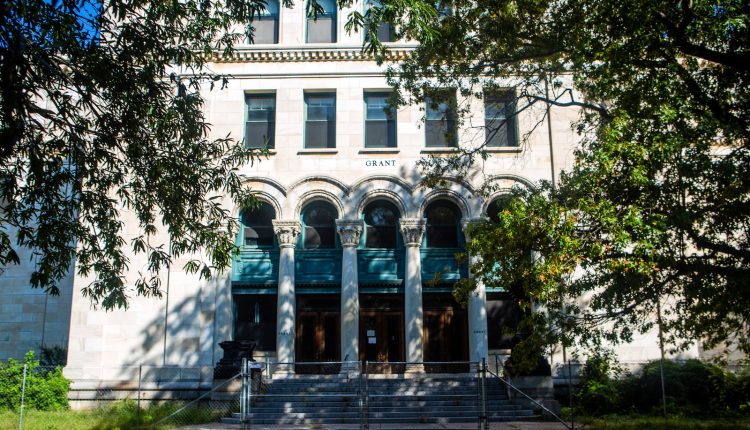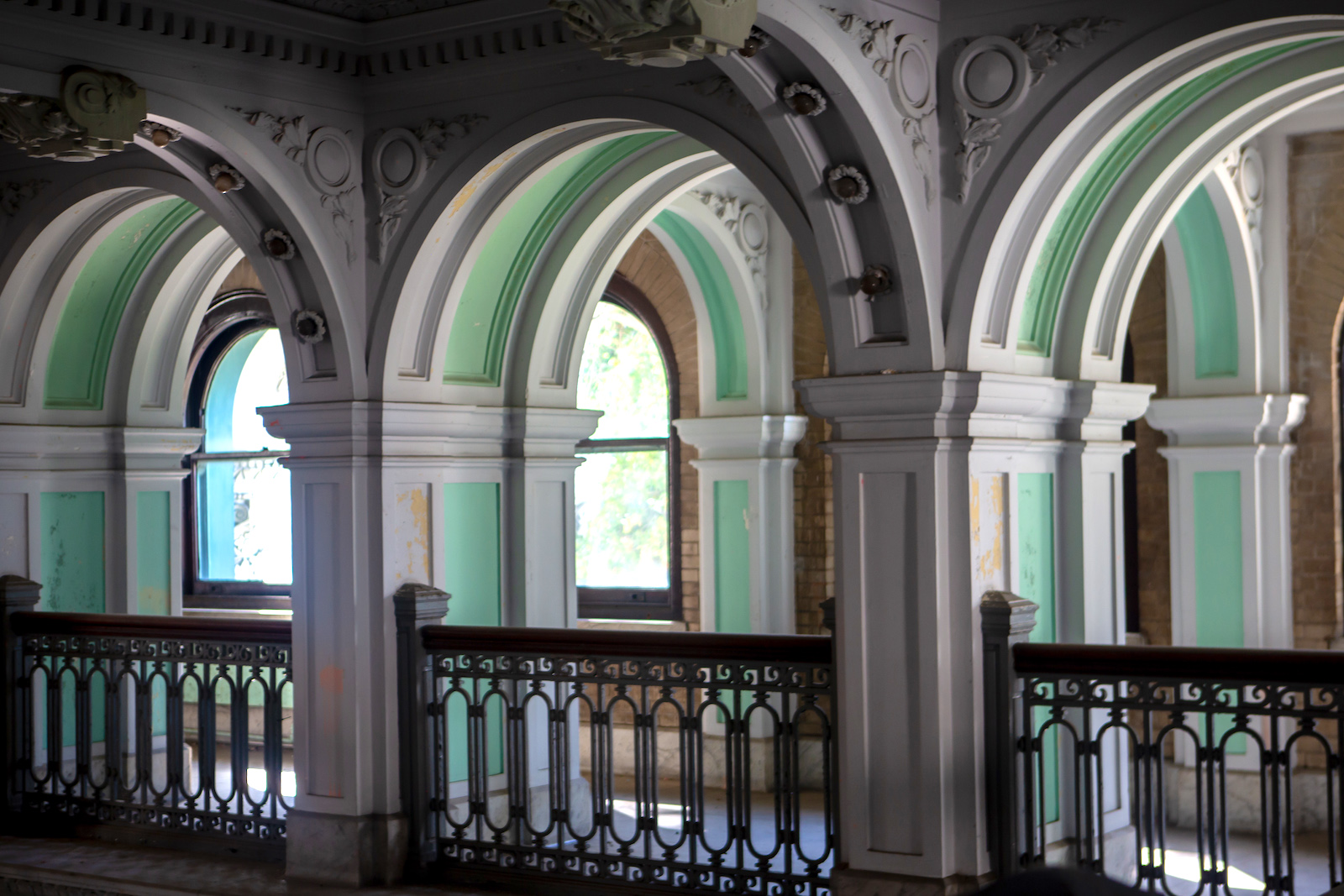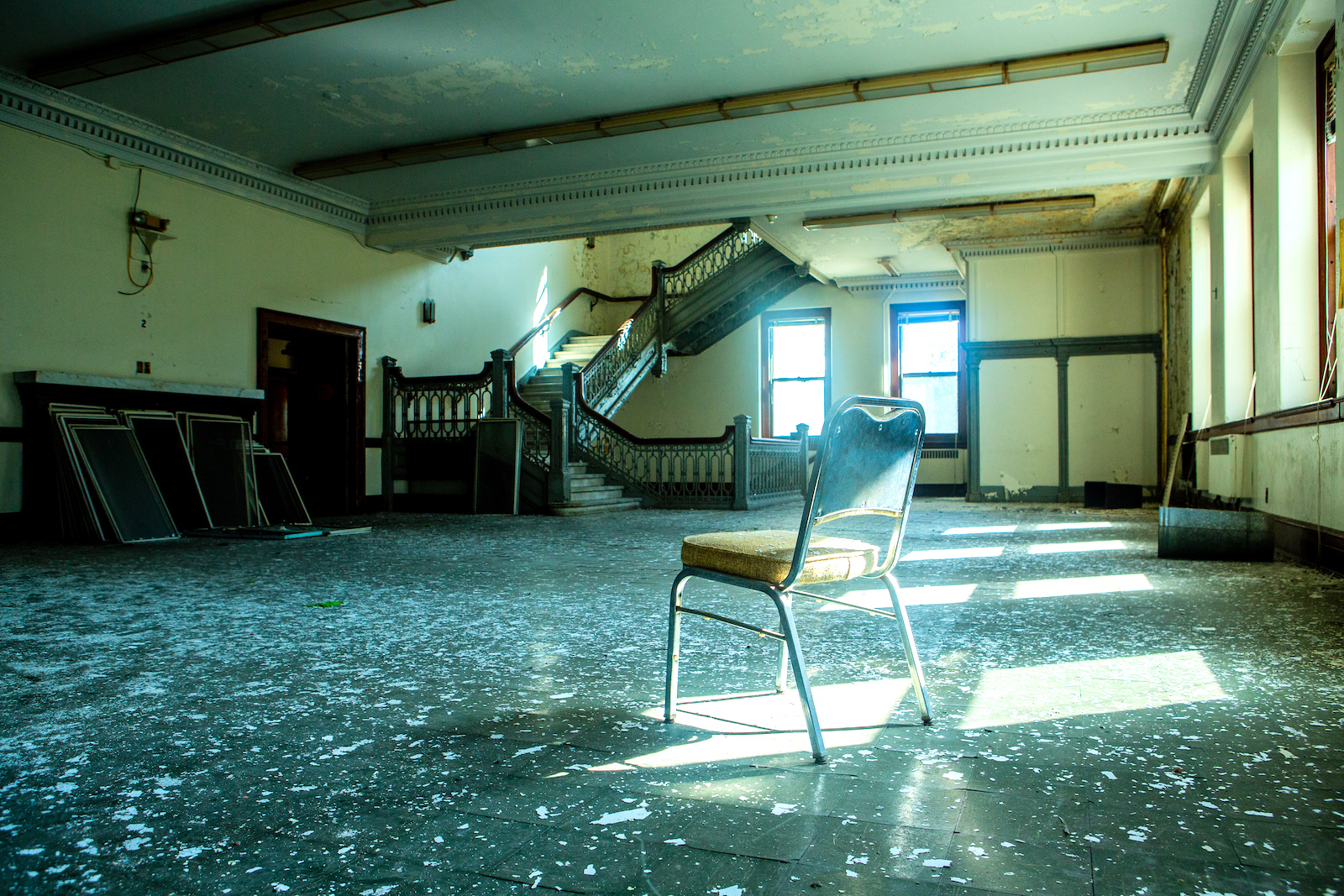
Historic, dilapidated Petworth building will see new life as senior housing
After nearly two decades of disuse, the neglected Grant Building in DC’s Petworth neighborhood will soon come back to life — as an affordable assisted-living facility for eligible seniors.
Since 2001, the Renaissance Revival structure has sat empty, with peeling paint on the walls and curling tiles on the floor. Surprisingly, while walking through the structure, one can find stunning marble columns, ornate corbels and detailed balustrades. Meanwhile, the entrance, though meekly shielded from view by a metal fence, boasts towering Corinthian columns and an imposing cornice.

Gragg Cardona Partners is expected to reach a lease agreement in early 2019 to turn the Grant Building into approximately 125 units. The building — located on the grounds of the Armed Forces Retirement Home (AFRH) — was constructed in 1910 as residences, community facilities and dining facilities for senior veteran residents.
Advisory Neighborhood Commission 1A chair Kent Boese supports the project. “There’s a need for this,” he said, noting the city’s lack of affordable and senior housing.
This new renovation project is headed by the AFRH, an independent agency of the federal government’s executive branch that provides residences and other services for retired members of the U.S. Armed Forces. The AFRH was established in 1991 with the merger of the U.S. Naval Asylum (founded in 1831) and the U.S. Soldiers’ Home (created in 1851). The agency operates two communities: one in Petworth and another in Gulfport, Miss.

Currently the DC campus has the capacity for 556 residents within a 272-acre historic district that is also the site of President Lincoln’s Cottage. Space is also leased to the Creative Minds Public Charter School, which serves approximately 600 children from pre-K through seventh grade.
Financial restructuring within the AFRH is the biggest catalyst of this renovation project.
“The home has been in trouble for the last few fiscal years, starting in about 2015,” said Travis Smith, strategic adviser to the AFRH’s chief executive officer. “Our trust fund balance was too low, and so Congress started giving us about $20 million to $22 million per year in taxpayer funds to keep us afloat. They told us to get off of that as soon as we could, so we’ve been working on strategies to do that.”
The agency’s trust fund dropped from $186 million in 2010 to $46 million in 2015, where it remained at the end of 2017, according to Military Times.

Over the coming three years, the AFRH will implement a new fee structure. Starting Jan. 1, 2019, the maximum monthly rent for those living independently in AFRH housing will be $1,990, up from $1,458. Residents will continue to have the option, however, of paying an amount based on their income if that’s more affordable, but the rate will rise to 48 percent from the current 40 percent. By 2021, the target maximum will be $3,054, or 60 percent. Price points for alternative levels of service, such as assisted living, long-term care and others, will vary.
An additional revenue initiative by the AFRH is the planned redevelopment of an 80-acre site located north of Irving Street NW and west of North Capitol Street. Under the AFRH’s master plan half the property will be open space and roads. The other half will include about 15 acres of residential space; 7.5 acres of hotel space; nearly 7.5 acres of office space; and a total of about nine acres for medical and retail space, assisted living facilities and a heating plant. The master plan totals over 4.3 million square feet of development. Lease negotiation is expected during the spring of 2019. According to Smith, the project has been on the shelf since 2006 or 2007, having been delayed due to the housing crisis.

“I’m really excited by the current leadership of the Armed Forces Retirement Home,” Boese said. “They’re being more creative in finding ways to get the Soldier’s Home on strong financial footing for the future to continue serving their mission providing housing and services for retired veterans while at the same time leveraging some of the opportunities beyond their grounds that can help them serve their mission.”
For now, the AFRH will need to present its redevelopment plans to the National Capital Planning Commission, the Commission of Fine Arts, the DC Historic Preservation Office and the National Park Service. In addition, due to federal National Environmental Policy Act requirements, the AFRH will have to engage various local government agencies to mitigate traffic and environmental impacts.


Comments are closed.